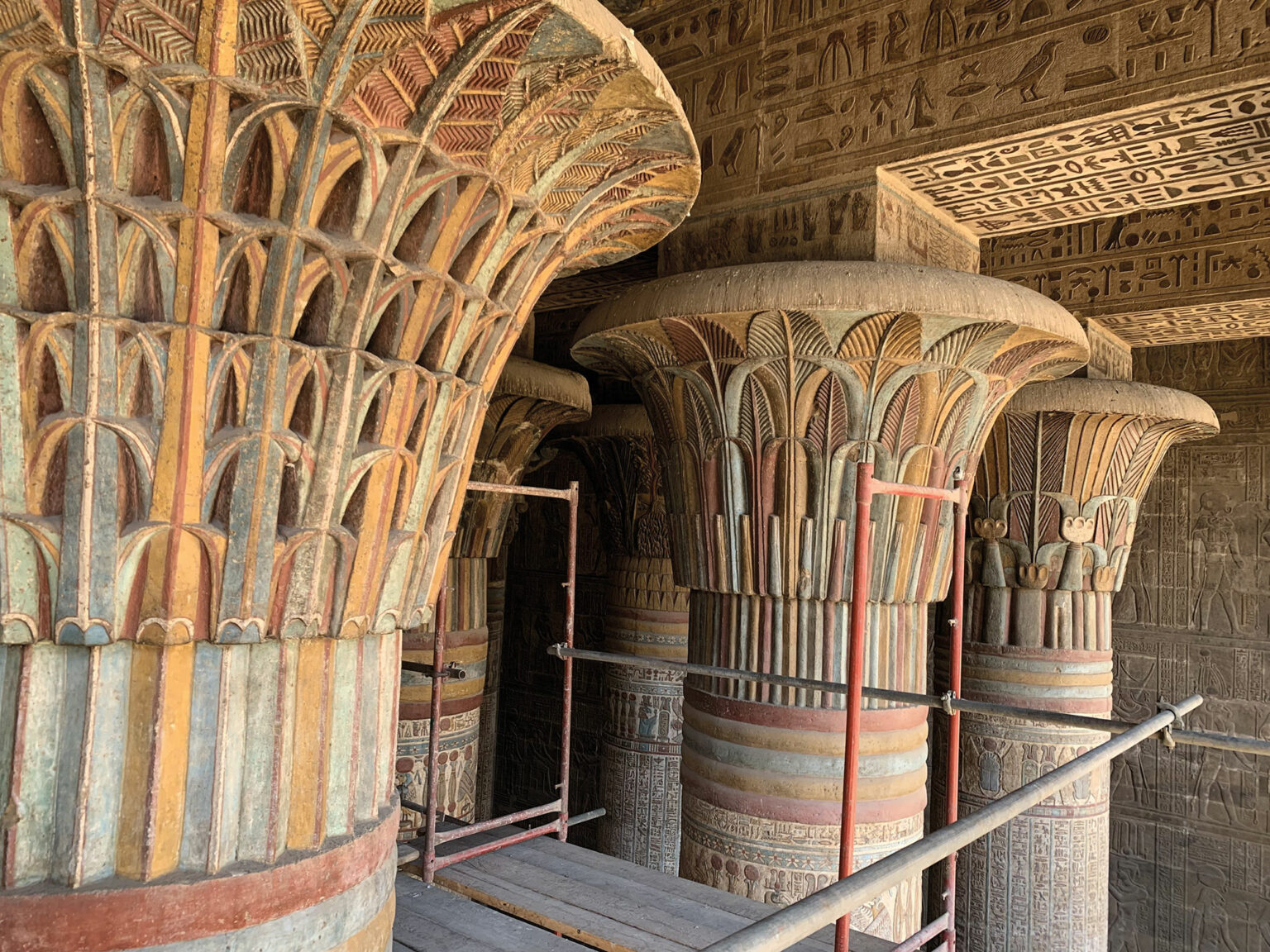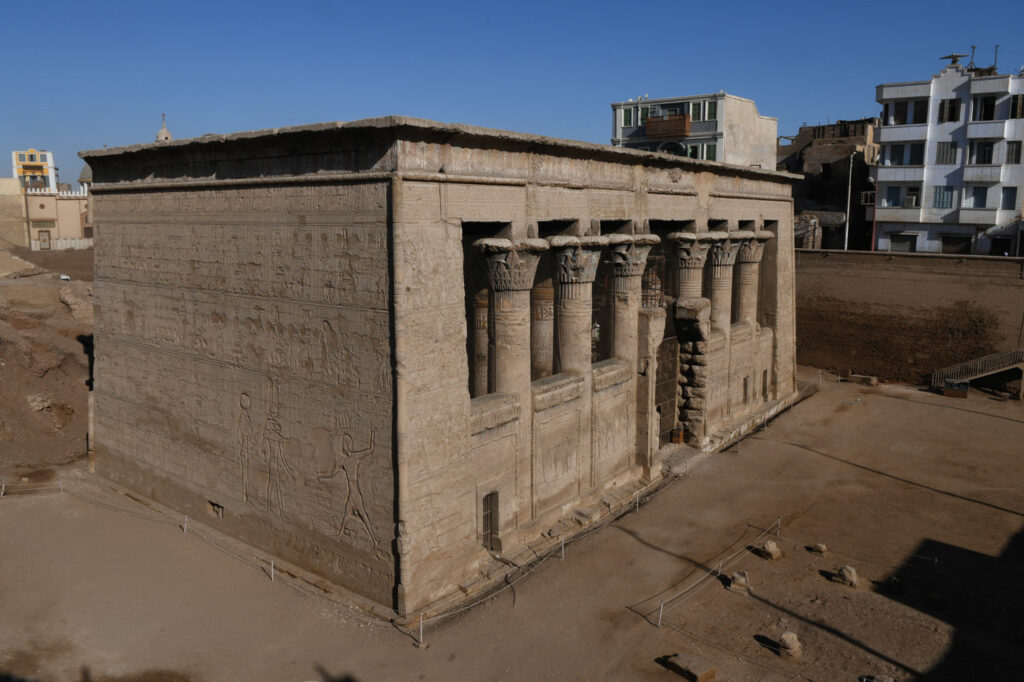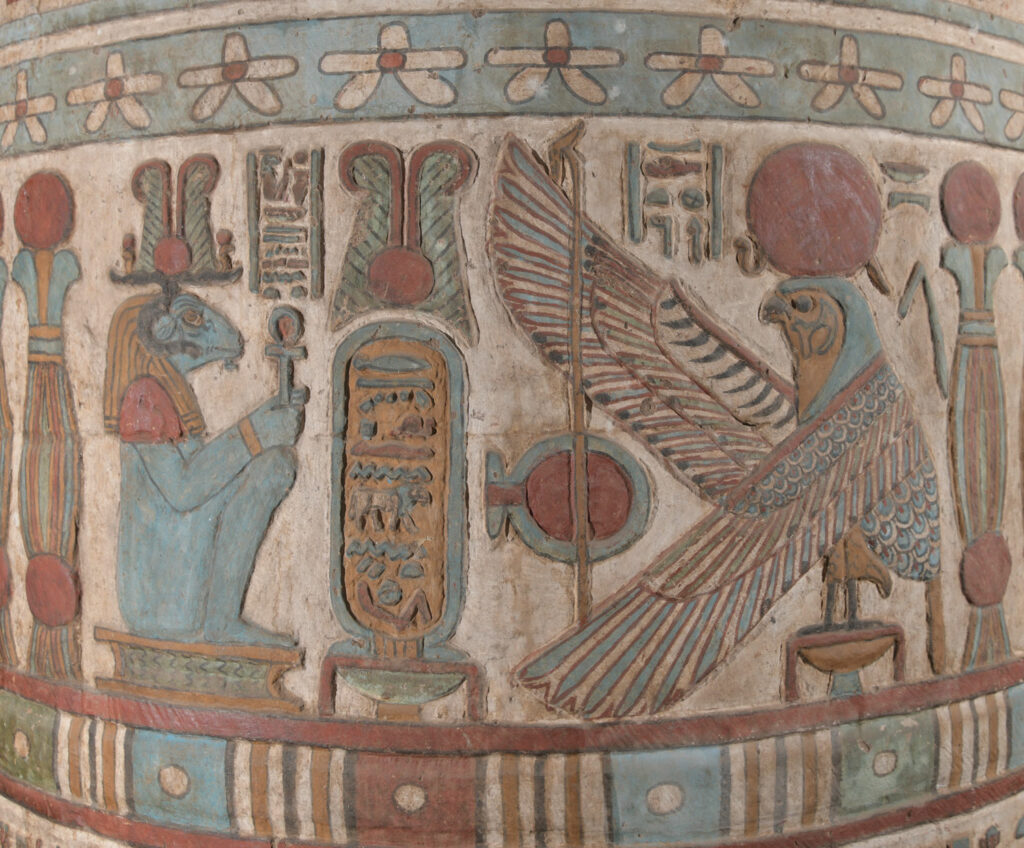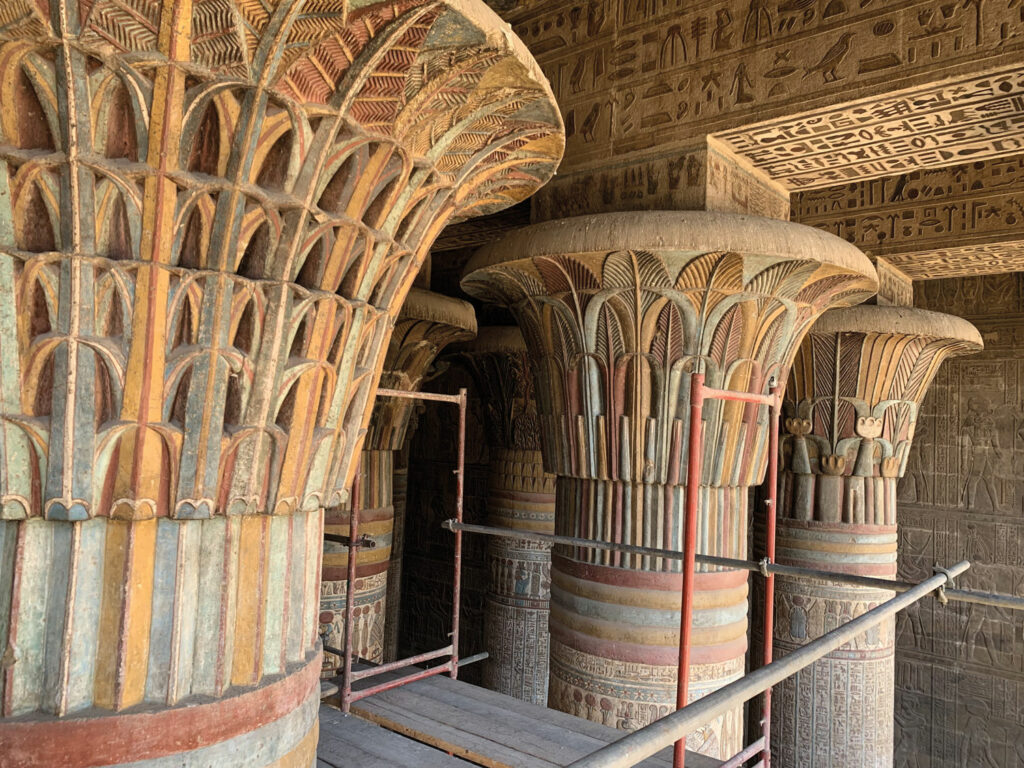Welcome to DU!
The truly grassroots left-of-center political community where regular people, not algorithms, drive the discussions and set the standards.
Join the community:
Create a free account
Support DU (and get rid of ads!):
Become a Star Member
Latest Breaking News
Editorials & Other Articles
General Discussion
The DU Lounge
All Forums
Issue Forums
Culture Forums
Alliance Forums
Region Forums
Support Forums
Help & Search
Anthropology
Related: About this forumAn Egyptian Temple Reborn

March/April 2025
By Benjamin Leonard
By removing centuries of soot, researchers have uncovered the stunning decoration of a sanctuary dedicated to the heavens

In the Egyptian city of Esna, a highly decorated entrance hall completed during the mid-third century a.d. is the only surviving part of a temple dedicated to the creator god Khnum.
Ahmed Amin/© Egyptian Ministry of Tourism and Antiquities
Some 100 major temples towered over the landscape of Roman Egypt, though today only six still stand. One of the best preserved sits in a residential neighborhood in the modern city of Esna on the west bank of the Nile in Upper Egypt. The temple was dedicated to the creator god Khnum, his family, and the goddess Neith. Now 30 feet below street level, the temple’s red sandstone pronaos, or entrance hall, is all that survives of what was once a larger complex. The other remnants of the temple, which stood behind the hall, are now buried beneath the city. In antiquity, the hall, which measures 120 feet long and 65 feet wide and stands 50 feet high, would have dwarfed the rest of the temple. Larger-than-life scenes carved on each of its exterior walls offered ancient worshippers a mere hint of the resplendent painted reliefs that still cover nearly every inch of the hall’s interior.

A painted relief on a column inside the hall features an oval cartouche containing the name of the Roman emperor Hadrian (reigned a.d. 117–138) flanked by Khnum, depicted as a ram, and Behedety, the falcon god of the midday sun.
Ahmed Amin/© Egyptian Ministry of Tourism and Antiquities
Construction of the temple’s pronaos began after the emperor Augustus’ conquest of Egypt in 30 b.c., but its decoration required centuries to complete. The entrance hall was constructed directly against the facade of the temple, which had been built during the rule of the pharaoh Ptolemy VI (reigned 180–145 b.c.), one of the kings in a dynasty of Macedonian royals who governed Egypt from 304 to 30 b.c. Throughout the hall, oval cartouches with the names of a long line of Roman emperors attest to the protracted time it took to finish the building and its decoration. Construction of the hall was likely completed in the mid-first century a.d., under the emperor Claudius. It took artisans until the reign of the emperor Decius, 200 years later, to finish carving and painting the building’s elaborate relief decoration.
In the late third or early fourth century a.d., by which time the temple had presumably been closed, the residents of Esna began to dismantle its main sanctuary and repurpose the building blocks to build canals. They used the pronaos as a shelter for the next 1,500 years, and, in the nineteenth century, it became a warehouse for storing cotton and ammunition. Over that stretch of time, fires lit inside for illumination and warmth gradually coated the bright paintings on the ceilings, columns, and interior walls in thick layers of dirt and soot. Parts of the pronaos were buried beneath sand until the twentieth century.
In the 1950s, Egyptologist Serge Sauneron cleared away the debris obscuring portions of the exterior walls. He then turned to the interior, recording those carved reliefs and hieroglyphic inscriptions that were visible to the naked eye. Although Sauneron gradually published the inscriptions and select drawings of the pronaos’ decorations, his death in 1976 halted this documentation project. Most of the inscriptions he transcribed were never translated.
Column shafts and lotus-leaf capitals inside the entrance hall

While cleaning the entrance hall, conservators revealed the original colors painted on column shafts and lotus-leaf capitals, as well as previously hidden hieroglyphic inscriptions on the crossbeams and walls.
More:
https://archaeology.org/issues/march-april-2025/features/an-egyptian-temple-reborn/
1 replies
 = new reply since forum marked as read
Highlight:
NoneDon't highlight anything
5 newestHighlight 5 most recent replies
= new reply since forum marked as read
Highlight:
NoneDon't highlight anything
5 newestHighlight 5 most recent replies
An Egyptian Temple Reborn (Original Post)
Judi Lynn
Mar 2025
OP
Tetrachloride
(9,182 posts)1. Esna city in Egypt, south of Luxor